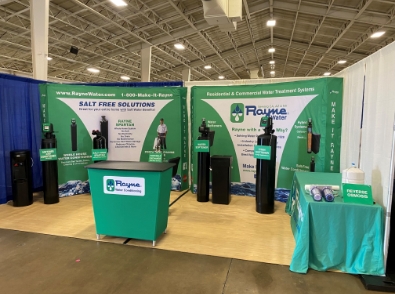Most parents naturally assume as their children walk out the door that they will have plenty of water to drink throughout the day. However, that doesn’t seem to be the situation at all. In fact most schools across the nation have a few drinking water fountains around, but no cups available. This means that if children want a drink during their lunch period they have to get up and go to the nearest fountain, wait in line to sip a drink and then go back and continue eating. How many adults would put up with that scenario? None of us would put up with that at our work, we would expect cups to be available.
Children at school can choose between flavors of milk and sometimes orange juice. If they want water, they must use the drinking fountain and those may or may not work and may or may not be convenient. According to the CDC’s National Health and Nutrition Examination Survey, only 15% of kids in middle school consume adequate amounts of water. That indicates that a huge percentage of kids are spending their school days being thirsty and dehydrated. Nutrition advocates believe school children’s access to water is a national problem the federal government is only just beginning to address.
Children spend the largest part of their day in school; they should be drinking at least 4 glasses of water at school. Considering how much playing goes on during recess, these 4 glasses hardly would seem to be enough hydration. Standard recommendations for children are 6-8 glasses of water per day; teen boys need about 11 glasses per day. If school children are only getting 4 glasses of water each day or less, they are actually in a dehydrated state most of the day. Dehydration can affect learning as well as mental and physical performance.
Congress recently passed the Healthy Hunger-Free Kids Act of 2010 in December to improve school nutrition in the National School Lunch Program. This same legislation requires that clean water be easily available in school. The question is, will these new rules be enough to address dehydration in students? School districts now have to provide water in student eating areas, but accessibility isn’t discussed. As long as water fountains are around the lunchrooms that may be all the requirements that must be completed. The main challenge appears to be the provision of cups to drink the water provided. Like was mentioned above, it seems that students are expected to get up during their short meal time go to the fountain and get a drink and return to eating.
Many educators and advocates say that too many of America’s largest school districts simply choose to not provide cups. Chicago Public Schools don’t, Miami-Dade County Public Schools don’t, Newark Public Schools don’t, Atlanta Public Schools don’t, and Clark County School District in Nevada also doesn’t provide cups to students. Some schools only provide cups if students ask for them. Educators say that providing cups can get expensive and take too much from the already shrinking school budgets.
A new program called Water Intervention, a 5 week research program that includes installing a water filter in the school, filling 5 gallon jugs, chilling them overnight, placing them in the eating area during mealtime and serving with cups. “We’ve seen students really gravitate towards the water out here and fill their cups right before and after lunch to hydrate” says Burt Cowgill, the project manager. “The water is very popular and we have a lot of participation.” This water intervention program has been done in 5 schools in the Los Angeles school district, provided free during the program. Now that the research has ended, it is up to the school district to continue funding it if it so chooses. According to CNN, the Los Angeles Unified School District says it cannot afford the estimated $1.8 million to $2.3 million it would take each year to provide the cups and water for the entire district.
Aside from the money expense, school districts may be paying attention to the loss in revenue from bottled water and other drink sales. These schools would have to come up with other ways of fundraising to replace the revenues lost from these drink sales.
Hard to imagine that our children’s water consumption – and health – could be significantly improved with the addition of paper cups or water bottles. Providing filtered water systems and cups would encourage students to actually stay hydrated and could make a difference in behavior and focus in the classroom.
Parents can perhaps help the situation out by sending a water bottle to school with their children. The only problem with this practice is some schools won’t allow students to store their water bottles at school. If they can’t leave them there, they forget to take them to school each day and the whole process is a failure. The fact is that water is of great importance to all of us, we all require a certain amount of water in order to survive. The amount of water we drink has a large effect on whether or not we are obese. In fact the lack of available water may be contributing considerably to the obesity of children. We can’t allow the lack of water to have such a huge impact on our children’s lives. It’s time school districts and parents got together and made certain that simple water is a part of every child’s school day for more than just a sip or two. Don’t let your school tell you that water is just too expensive for them to supply, they are taking care of your children.
Even if your child’s school won’t help, you should consider a service for water softening system in Los Angeles to ensure your home’s water supply is pure and contaminant free.


